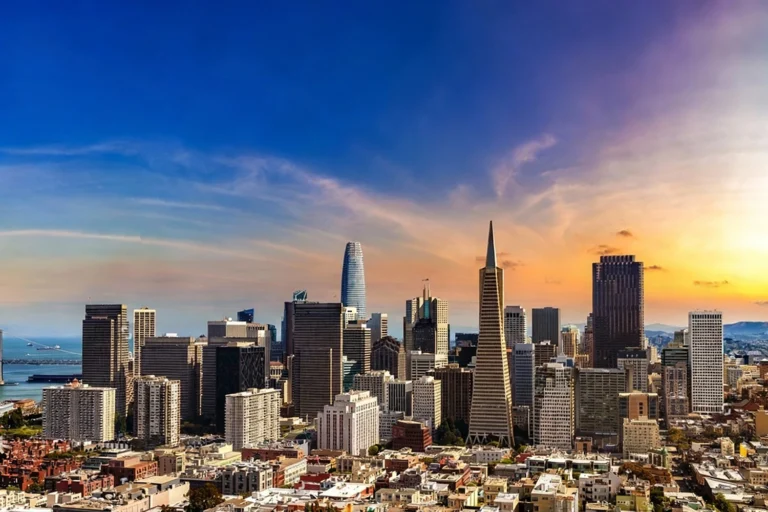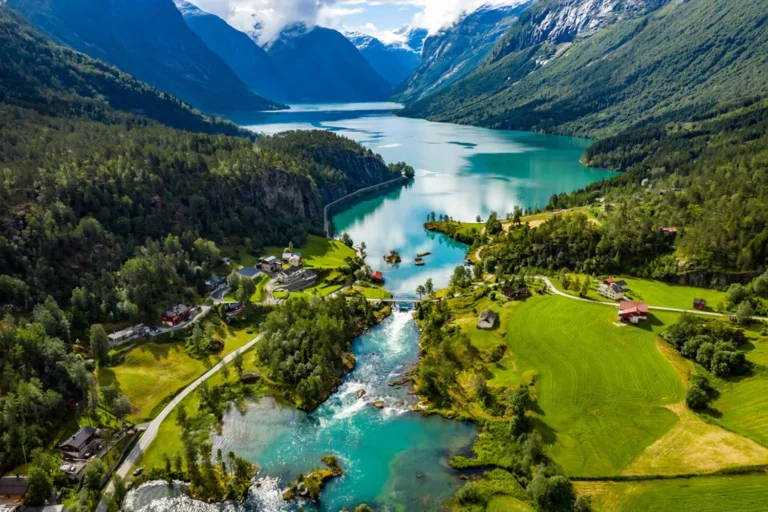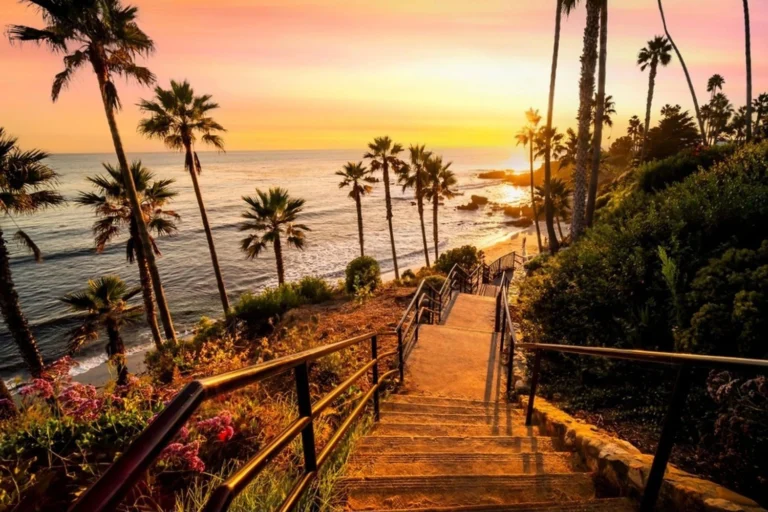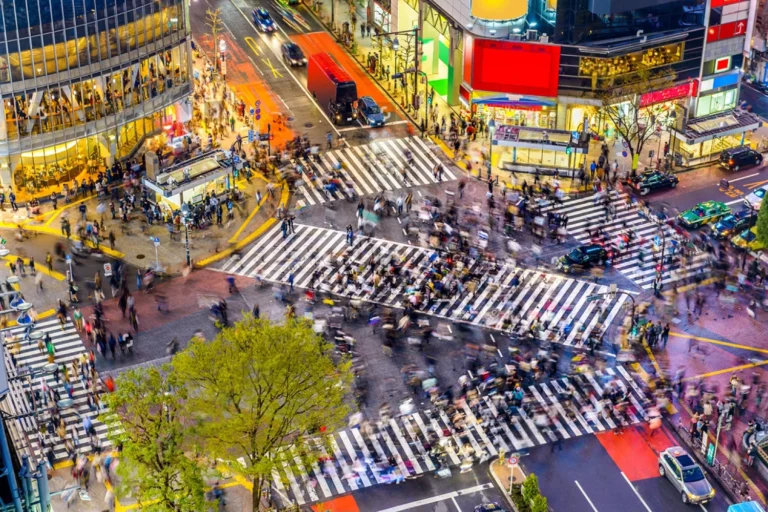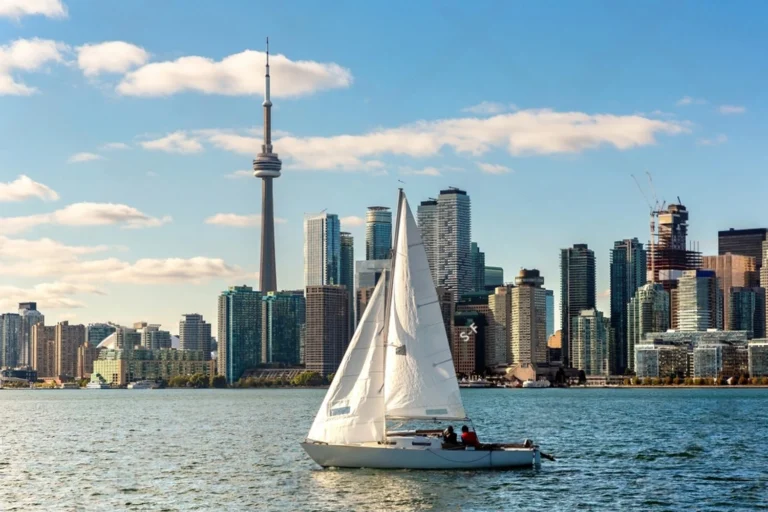Hawaii: 30 Strange and Fascinating Truths Beyond the Beaches
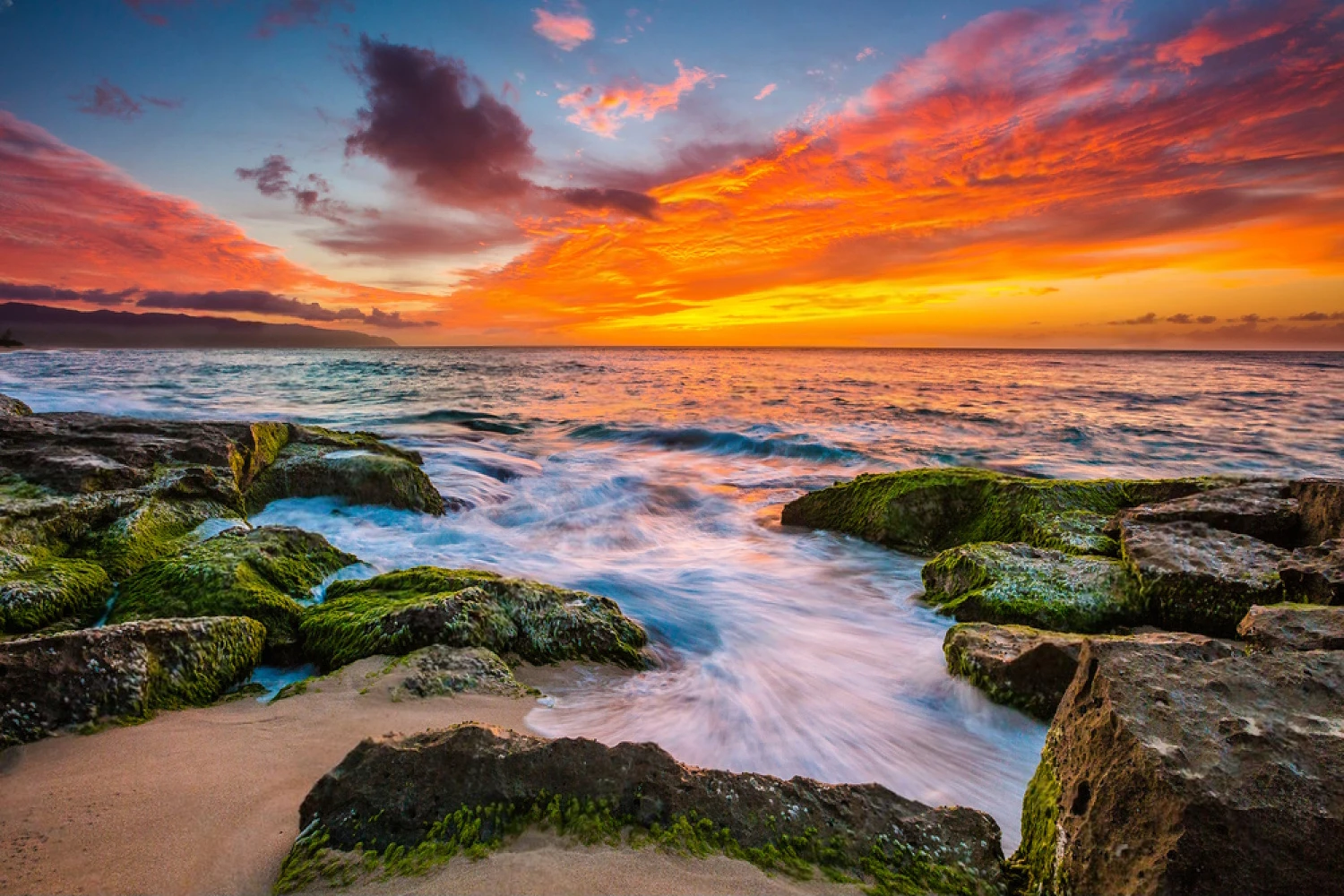
I find the most meaningful discoveries come quietly, and being there can feel like turning a shell in your palm, each slow tilt catching a new glint. In Hawaii, the air tastes of salt, smells of rain and earth, and the shoreline feels cool under bare feet. What stays with me are the small human moments the nod from a shopkeeper, a shared smile at a bus stop, the quiet between waves tiny clues that invite a closer look. Together, they build a sense of place that feels deeper and more alive than anything on a postcard.
Two Official Tongues Under One Island Sky
I still get goosebumps when a morning breeze carries a schoolyard chant over the palms. In Hawaii, it’s the only U.S. state where two official languages share the day: English and Hawaiian, side by side like old neighbors. Hearing them mingle feels soft and alive the vowels round and salt bright, the cadence steady like a tide returning to shore.
For a long stretch after annexation, the language was hushed, almost slipped from everyday lips. Now you catch it everywhere teachers calling out cadences, kids answering with proud smiles, aunties singing at sunset, signs that pronounce the land properly. It’s a revival made of voices more than monuments, a chorus moving through buses, markets, and backyard strings, sung across these peekaboo islands until the air itself seems to remember.

Feral chickens on the backroads after the storms
I had to laugh the first time a rooster swaggered past, chest out like a little mayor, while the wind smelled of salt and plumeria. Out on Oahu’s backroads, they appear where the asphalt turns quiet amber eyes bright, feathers catching sun, the soft cluck and rustle drifting through heat waves. There’s something disarming about them, this easy confidence, as if the island set a place at the table and they simply sat down.
They’re the descendants of birds that slipped free when hurricanes tore open coops, and they never went back. Now their crows pop up at noon as often as dawn, a farmyard soundtrack stitched into the surf and traffic. I remember realizing how right it felt: life here survives and then improvises, turning accidents into a rhythm. Those birds remind me to loosen my grip, to accept the unexpected strut across my day and smile at the ordinary made wild.
The Islands Where Snakes Are Not Allowed
I laughed when a friend said, “We don’t do snakes here.” Then the silence under the palms made sense the grass felt calm, like the ground itself had unclenched. In Hawai‘i, strict import laws keep snakes out, and the understory belongs to the birds: doves toddle across lawns, little ground dwellers rustle through ti leaves without hurry, and the morning is stitched together by birdsong instead of worry.
It changes the way you breathe in a place. There’s a soft confidence to it, knowing that if anyone ever spots a snake, it’s either a zoo escapee or someone breaking the rules in a very odd way. I remember thinking how tender that boundary is, a quiet law protecting things we barely notice nests tucked in grass, small feet unafraid, the simple peace of walking without a flinch so rare that a serpent here would feel like a typo in a lullaby.
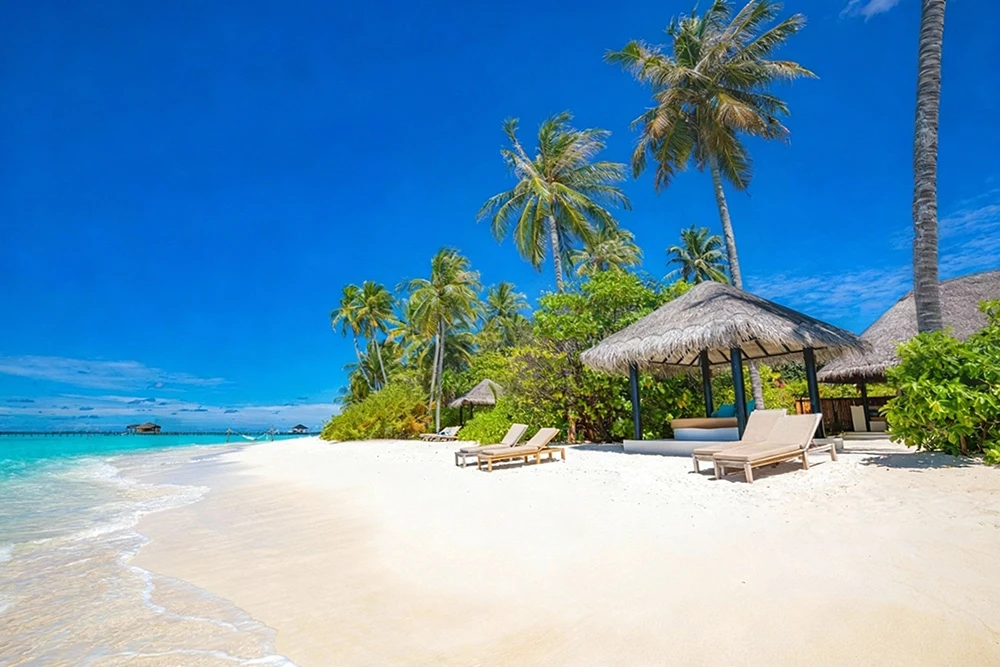
A clock that runs on island time
I remember laughing when my phone insisted it was later than the sky. Out here, the day moves at its own pace, and no one bothers to spring forward or fall back daylight saving time simply never arrives. There’s a tender relief in that, like setting down a heavy bag you forgot you were carrying. The pace is easy, and your shoulders drop without trying.
This far flung chain keeps its own time zone, and on Hawai‘i people joke they only have two seasons: summer, and summer with rain. The line always lands with a smile because it’s true in spirit the air stays warm, trade winds graze your skin, and showers sweep in like soft applause before the light returns. I once sat under a plumeria tree and realized how rare it feels to live unhurried by other people’s clocks. It isn’t laziness; it’s trust in a rhythm that doesn’t need adjusting.
A Hilltop Wright, with Curves for Marilyn
I didn’t expect Frank Lloyd Wright to cross my mind out here, but a low, curving silhouette sat easy under the sky on a quiet hilltop. On Maui, his only design in these islands has a quiet presence, letting sunlight slide along its walls while the air tastes faintly of salt and plumeria. It made me slow down, like a favorite song drifting in from another room.
The surprise runs deeper: those soft curves were first imagined for Marilyn Monroe. I love that how a shape meant for a star ends up trading velvet drapes for plumeria air, fame settling into quiet. It’s the kind of secret an island keeps because it understands grace better than fuss.
What stayed with me wasn’t the celebrity lore, but the calm. The house keeps a low profile beneath that wide horizon, and that restraint feels right in a place shaped by wind and patience. I left thinking some designs grow truer when they find quiet.
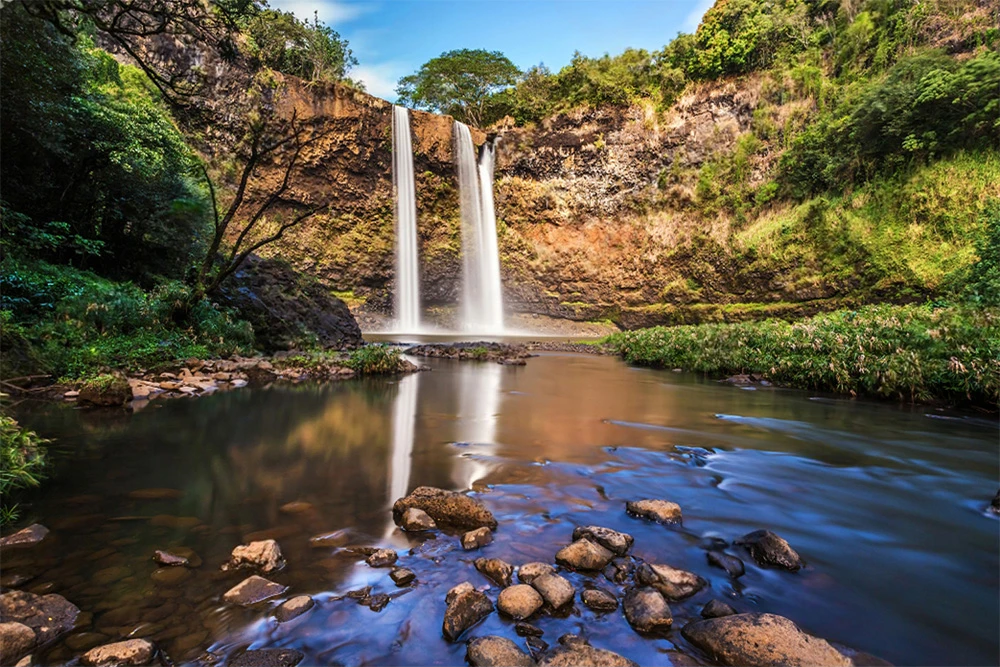
No Billboards, Only Ocean, Sky, and Cinematic Roads
I remember a soft kind of hush along the coast the kind that makes colors show off. The air tasted salty, sweet with plumeria, and the road curved beside cliffs while the Pacific flashed that hard, glassy blue. Nothing shouted at me. No smiling faces ten feet tall, no giant fonts promising anything. Just horizon and wind, and a little space for the day to breathe.
In Hawaii, outdoor ads are banned, and it changes how you move through the world. Each winding drive feels like an open air cinema, scenes unspooling without captions: rain misting the ridges, sunlight sliding over old lava, a lonely lighthouse holding its bright thought. I noticed how my thoughts got quieter too, like sky after rain. It’s a small rule with a tender outcome your eyes rest, and the place feels more itself.
Respecting Honu: giving sea turtles their breathing room
I love the hush that falls when a round, mossy head breaks the glittering water and the beach seems to exhale. Salt hangs on the breeze, the sun skates across the small waves, and the Honu glides along like a quiet elder of the tide. You feel it in your chest the urge to lean closer and then the gentler feeling that says, not today, not that way.
It isn’t just good manners here; it’s the law. Harassing or touching a Honu is illegal, and even getting too close can earn you a hefty fine. What stays with me, though, is how naturally people honor that boundary the excitement shifts into a kind of caretaking, a soft circle of space that everyone seems proud to keep.
In Hawaiʻi, the rule feels less like punishment and more like a promise we keep with the ocean. These are ancient visitors, and the respect around them is practical and tender at once, the kind that makes a place feel like it knows itself. I remember walking away feeling quietly steadied, as if the shoreline had reminded me how to share a home without taking more than your share of wonder.
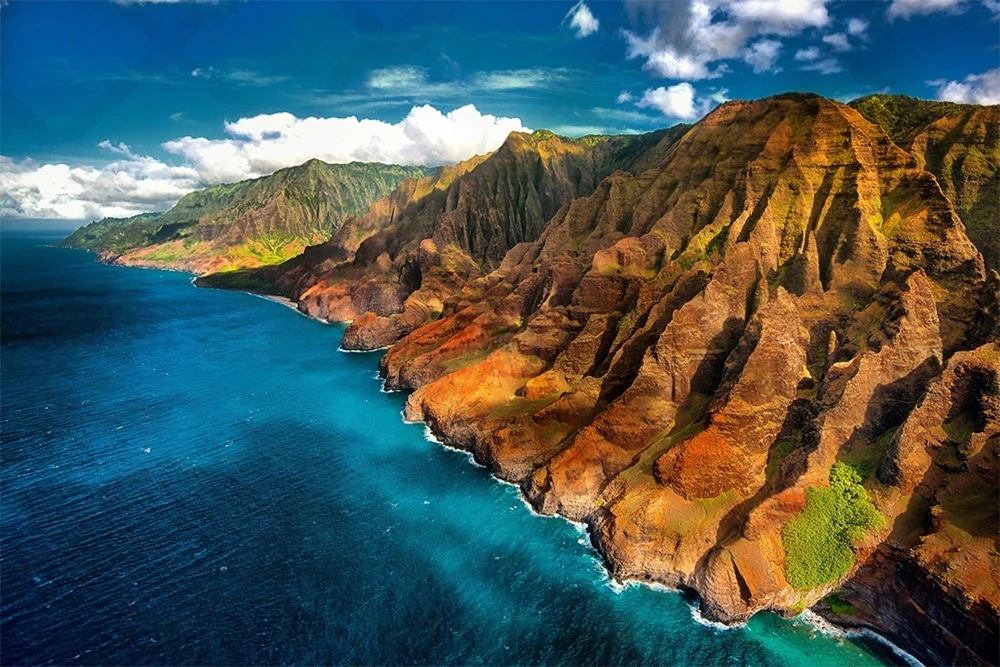
Cowboys rode here before California became a state
I didn’t expect the soft clink of spurs to make sense beside salt wind and plumeria, but history here keeps time by hoofbeats. At Parker Ranch on the Big Island, the story begins earlier than the statehood on the mainland, and you feel it in the red dirt, in the hush that falls when the pasture opens like a page you’ve somehow turned before.
The paniolos carry a lineage that crosses an ocean: descendants of Mexican vaqueros who came to tame wild herds, their knowledge braided into local rhythm and language. I remember hearing a lariat whistle past and thinking how the skills survived not as a museum piece, but as a heartbeat steady, sun warmed, unhurried.
And it’s still alive in the small, joyous details: weekend rodeos where cheers roll over the arena, leather creaking, dust rising in amber swirls, cowboy hats crowned with leis that smell faintly of sweet grass and flowers. Ranching isn’t a postcard cliché here; it’s stitched into the present like a bright lei work and pride, family and land reminding me that islands can hold more stories than an ocean can carry.
Sunlit Pools in a Hidden Mermaid Grotto
You know those places that hush your voice? The Mermaid Cave is one of them sunlight drips through the rocky roof, laying coins of gold on turquoise pools until the whole grotto shimmers. Out on Oahu’s rugged west side, it feels almost mythical, like you stumbled into a secret kept by the tide. The air is cool and briny, the stone damp, and that blue has a calm that loosens the knots in your head.
I remember a local telling me not to let the light fool me: check the tides, and never go alone. Out here the ocean can switch moods in a heartbeat, and the passage that’s gentle at low water can turn dangerous with sudden surf. Maybe that’s the lesson of the place beauty that asks for respect, wonder edged with caution, the kind that leaves you quiet and grateful all the way home.
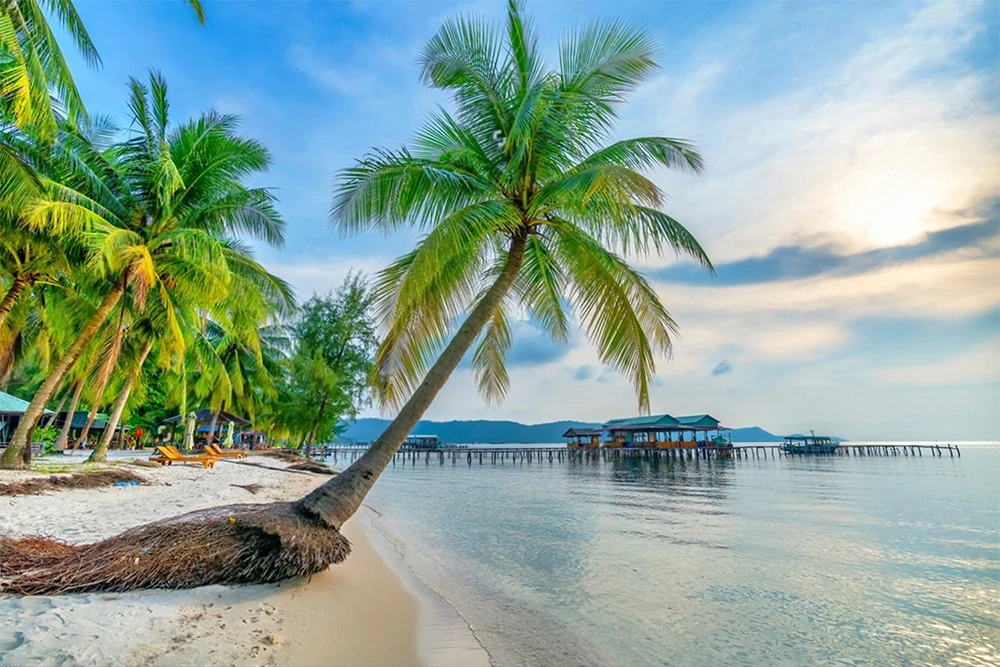
Where buildings bow to the height of palms
I remember noticing how roomy the sky felt, the way the trade winds slipped by with a hint of salt and plumeria. There’s this little law that keeps anything man made from standing taller than a palm, so the skyline never jabs at the clouds; it stays unhurried, almost drowsy. You sense it in your shoulders – they drop without asking.
What gets me is the kindness of that choice. On Kaua‘i, palms set the ceiling, and evenings stretch wide; sunsets don’t rush, they unspool in bands of mango and hibiscus while birds stitch their way home across the light. It feels like the islands trusting themselves – that beauty lands better when it has space, that a quiet horizon can hold more glow than any glittering tower. I walked away softer, thinking about the rare rule that makes room for what we came for.
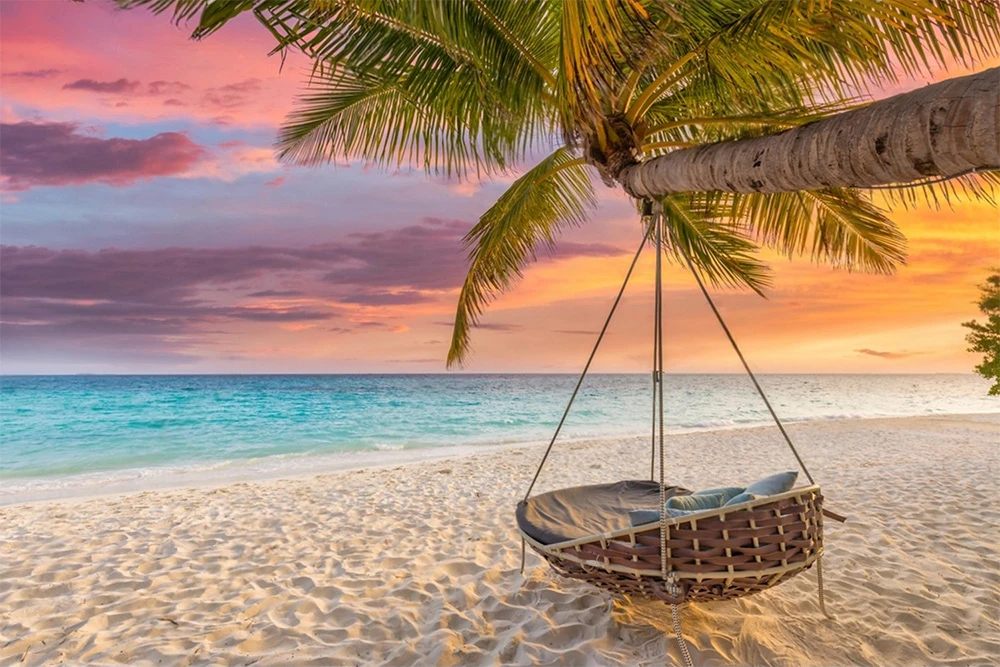
An Australian nut adopted by island volcanoes
Funny how the snack everyone swears is born of the islands is actually a traveler. Macadamias came over from Australia in the 1800s, yet they taste so much like here the buttery crunch, a mellow sweetness, a warmth that lingers on your tongue. I remember the smell of them roasting near a roadside stand, toasty and rich drifting over red dirt, the kind of scent that makes you slow down and breathe a little deeper.
Farmers discovered the trees loved volcanic soil, and once they recognized that, orchards spread and this borrowed seed turned into a livelihood, then into a craving shared far beyond the Pacific. In Hawaii, that feels right; the land has a way of opening its palm to newcomers and teaching them how to belong. Every handful reminds me that belonging can be learned shaped by soil, patience, and the quiet work of time.
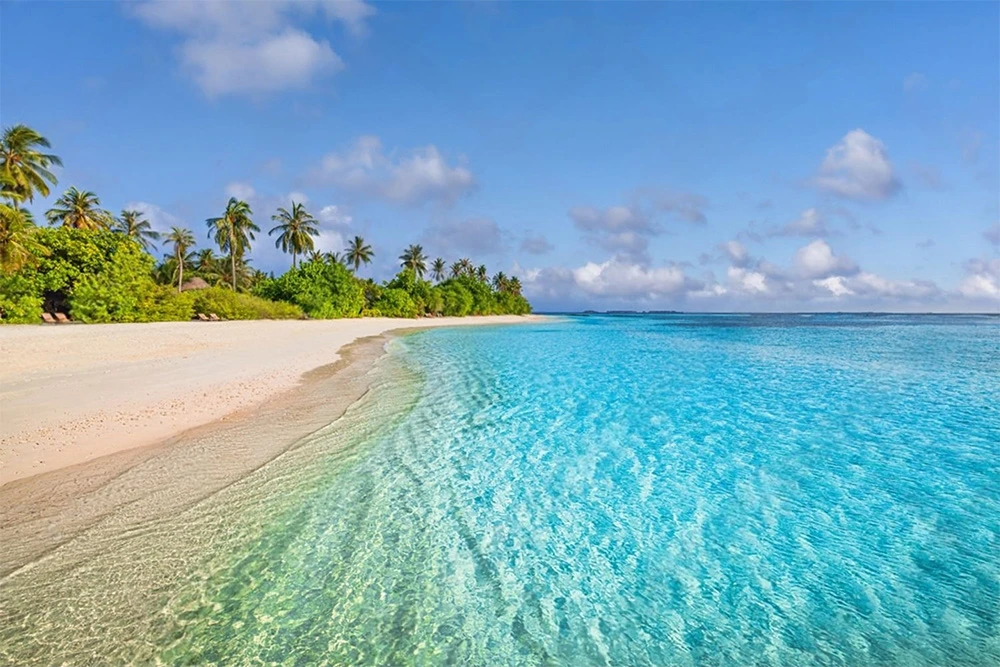
Three digits that feel like home: 808.
I grin every time 808 pops up – on frayed caps, soft old tees, even the sun faded bumper of a beach truck. In Hawaii, it’s everywhere, and it doesn’t feel like a phone number at all. It’s the islands’ heartbeat, three beats long, carrying a little salt wind and the sweetness of plumeria on a late afternoon.
Ask about it and you don’t get an explanation so much as a story – aunties, surf breaks, small town gyms on Friday night, the way strangers still wave and call you cousin. People talk about where they learned to drive, who taught them to throw net, what it means to come home with slippers dusty red. 808 becomes a password into family, a small way of saying we belong to each other despite all that ocean in between.
https://en.wikipedia.org/wiki/Hawaii
One island, three seasons in a day
Some places make you choose; this one laughs at the idea. I remember the sting of cold air up high, the hush of snow resting on an ancient volcano, and that giddy kid feeling that makes you want to slide for no good reason. By afternoon everything changes black sand warming your ankles, salt on your lips, the sun turning the water into a thousand sparks.
An hour later you’re under rainforest shade, everything dripping and fragrant, the air thick with fern and guava. It’s like flipping channels in the sky, and only then do you realize this is just a regular day on the Big Island, where microclimates stack like secret rooms. The surprise isn’t only the contrast; it’s the way it loosens your idea of what a day can hold, and you leave feeling lighter, more willing to say yes to the unexpected.

A noon when every shadow simply vanishes
I remember the hush that falls at lunchtime, the kind of bright quiet that makes you blink. Heat shimmers on the sidewalk, colors turn crisp, and even my sandals leave no outline. They call it Lāhainā Noon, that sweet, strange moment when the sun stands exactly overhead and the world loses its shadow in Hawai‘i.
Kids celebrate it with little science magic: pencils balanced upright, standing by sunlight alone, a soft chorus of delight at something invisible and grand. It feels like the island holding its breath, a secret handshake with the sun that says we’re exactly where we’re meant to be. For a brief moment, light doesn’t just fall on the place it belongs to it, and you feel yourself belong a little more too.

America’s rain capital on the oldest island
I used to think rain meant gray days, until a warm mist beaded on my skin and the sound of water traveled through the valleys. They told me it’s the rainiest place in the country some years more than 400 inches and somehow that felt welcoming instead of heavy. On Kauai, age shows in soft, folded cliffs and in waterfalls that drop like silver threads, stitching green to green. The air smells of wet ginger and red earth, and even silence feels lush.
It’s the oldest of the islands, and there’s a steady patience in the way the land holds water. The rain doesn’t rush through; it lingers, soaking the valleys and feeding cascades that bloom after a passing squall. I remember realizing the place isn’t just wet; it’s generous, the kind that makes you breathe slower and notice every shade of green. Maybe that’s why it stays with you you learn that abundance can be quiet, and that some beauty needs time and countless storms to grow.

Twelve letters shape a melodic language.
I didn’t know a language could feel this gentle until I heard how Hawaiian moves across the tongue soft, patient, full of air. In Honolulu, even the street names seem to breathe with the trade winds, vowels opening and opening until your mouth relaxes to catch them.
There are only twelve letters, which makes the words both simple and wonderfully tricky for newcomers. The sounds slip into one another like a tide sliding over pebbles, and before you know it, you’re half singing a place name, surprised at how your voice warms as it goes. It’s not just pronunciation; it’s a way of keeping time with the islands.
I remember realizing that the smallness of the alphabet isn’t a limit, it’s a rhythm space around the notes, a lullaby the ocean might hum. It asks you to slow down, to listen for breath between syllables, and to meet the language with kindness. That’s the quiet gift here: words that teach you to feel where you are, not just say it.
Night Marchers on Sacred Moonlit Paths
Some nights the air turns hushed, the kind of quiet that makes you listen. I remember sitting near the shore and hearing a far off thump, steady and patient, and a low note carry across the water from a conch. It wasn’t loud, just close enough to settle under the skin, like a slow heartbeat you suddenly notice.
People call them the Night Marchers ancient spirits moving along their sacred paths after dark. Locals swear the drums and conch still pass by, and that if you happen to see the procession, the respectful thing is to lie face down and never look up. It sounds severe, but it feels less about fear and more about courtesy, like stepping aside for elders in a crowded room.
In Hawai‘i, that idea sits quietly in the salt and wind. Once, after hearing those sounds, I found myself whispering good evening to the dark and waiting a moment before I moved. Maybe that’s the real gift of the legend it nudges you to listen harder, walk softer, and remember you’re not the first to cross this path.
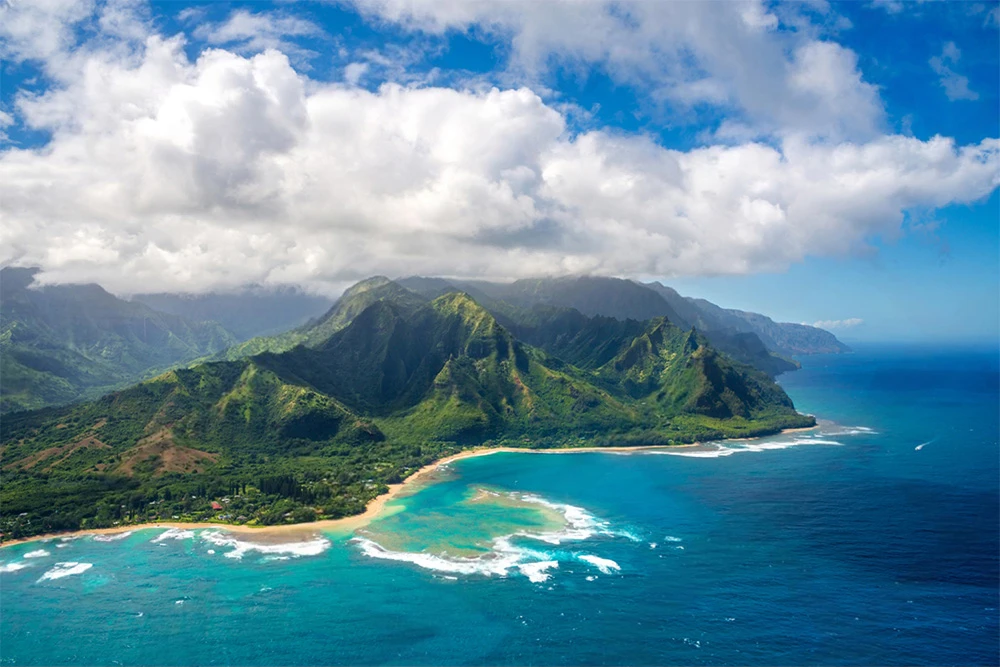
Cinema memories and a cove with a secret tunnel
I remember the sound first – waves gathering and settling like a hush, and that bright turquoise that looks almost unreal. The lava walls keep the wind at bay, the rock warm enough to smell faintly of sun, and there’s this feeling that you’ve wandered into a pocket saved for whispers. It’s the kind of spot people mention in quiet confidence, not to keep it from you, but to keep it gentle.
It still amazes me that From Here to Eternity chose this shore, because the real romance isn’t the famous kiss, it’s the place itself. At Halona Beach Cove, the tide tucks into a stone amphitheater, and somewhere under the surface a secret tunnel answers each swell with a soft echo. The water is so clear you start believing in good endings.
Locals tell it best – stories of romances sparked in the shade and daring escapes when the ocean demanded nerve – and you hear them with salt on your lips and sand cooling between your toes. I think that’s why it lingers: the walls make you feel safe, the sea reminds you to stay honest, and somehow you leave both steadier and a little more open.
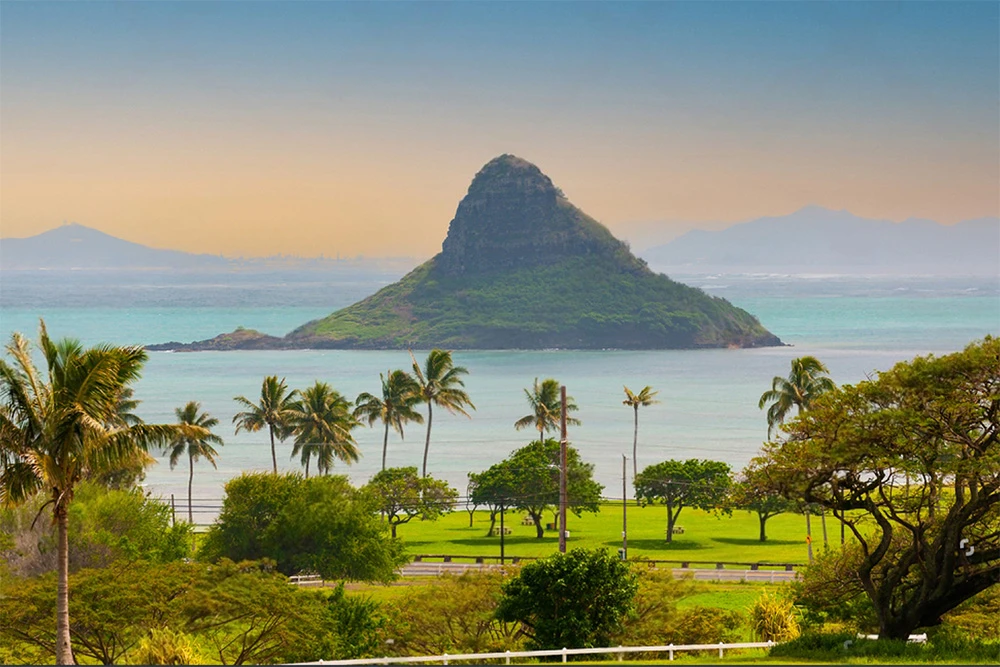
America’s only homegrown coffee, born on volcanic slopes
It still surprises me that in a country obsessed with caffeine, there’s only one U.S. state where coffee actually grows. Maybe that’s why a cup from these islands tastes unhurried, like sunlight settling in a mug. The air smells of wet earth and sea salt, and the first sip feels warmer than the morning itself.
In Kona, the beans seem to carry whispers of lava and rain, and people speak about the soil with respect and a little awe. That care shows up at global auctions, where those small harvests climb to sky high prices that make collectors competitive and locals quietly proud. What I remember most, though, is the calm aftertaste steady and round, made by years of careful growing.
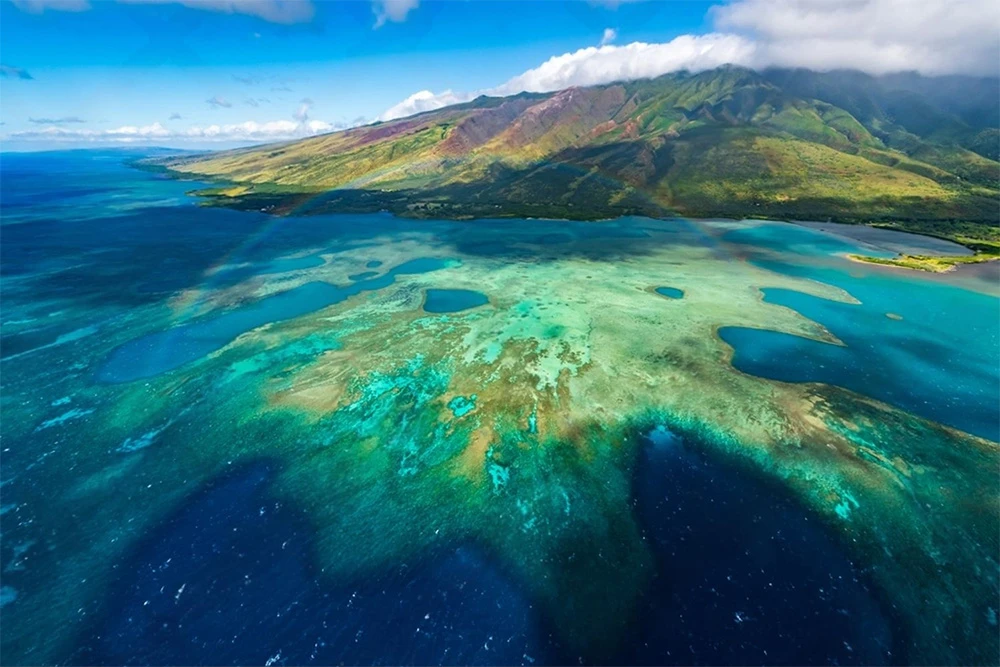
A coconut in the mail, an island hello.
I still laugh remembering the first time I saw a coconut sitting on the post office counter, bristly husk, a dusting of sand, and a line of stamps marching across it. The clerk just grinned and said, Oh yeah, we send them naked write a name, stick on enough postage, and off it goes. The U.S. mail will carry that little globe of island air straight to someone’s kitchen table.
There’s something tender in that mischief: a piece of a tree becoming a postcard, like a smile with a postage stamp. On Molokai, it’s not just allowed, it’s a small tradition, and it feels exactly right the rough fibers pick up fingerprints and salt, and the whole thing travels with the breeze still caught inside. It’s a reminder that hello can be simple and joyful, a small sun with an address rolling through conveyor belts, bringing the easy hearted spirit of the islands all the way to the mainland.
An island canyon with vast views and no snakes
Red dust on my ankles and a cool mist on my face what a strange, tender pairing. They call it the Grand Canyon of the Pacific, but names never quite catch the way the cliffs glow brick red while waterfalls comb the green slopes. Waimea Canyon on Kauai stretches for ten miles, layer upon layer of time laid bare, and I remember feeling small in the kindest way, like the sky had made room for me.
The panoramas could rival the Southwest, yet the air here tastes softer, rimmed with ocean and trade winds. It’s almost like a desert dreamed in watercolor, only gentler no hiss in the grass, no snakes at all to tug at the back of your mind. I left with red dust on my shoes and a quiet in my chest, surprised by how a place so vast could feel so welcoming, like grandeur with an open hand.
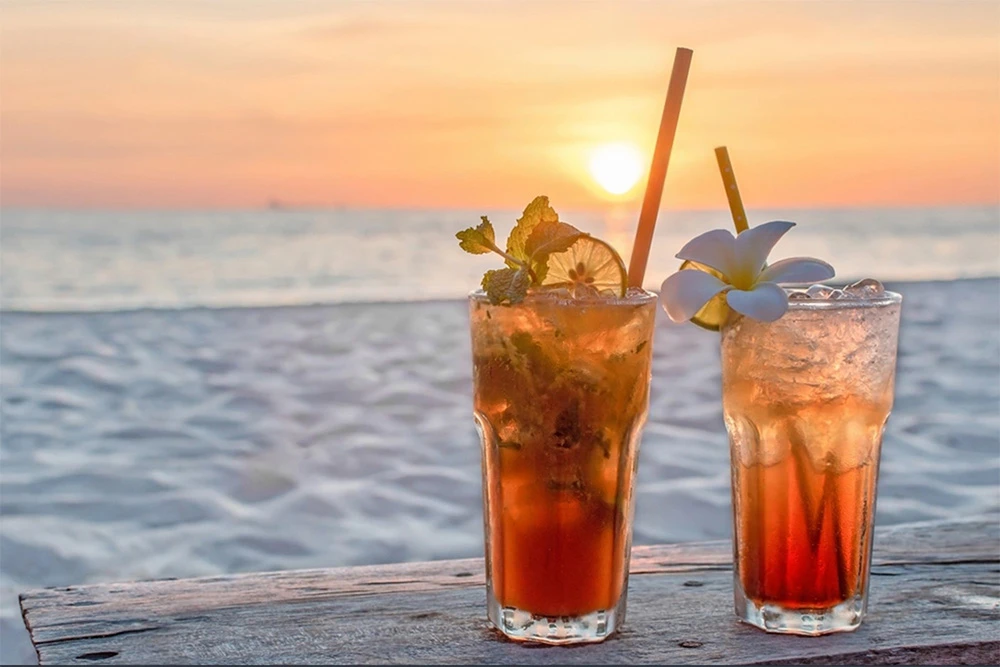
Kamehameha’s stones, where strength and quiet wisdom linger
I didn’t expect a rock to hush a busy street. The stone sat warm in the sun, salt in the air, a faint sweetness of plumeria drifting by. People say Kamehameha the Great the chief who gathered the islands under one rule could lift stones like these, as if testing the weight of destiny. Standing there, you feel how a simple boulder can keep a story alive, steady as a heartbeat under the lava. There are others scattered around the islands, still marked and quietly tended.
Once, in Hilo, I watched locals pause by a marked Kamehameha Stone some left a lei, others just a breath and a nod that felt like a promise to themselves. Friends told me people come before big steps: a new job, a voyage, a hard conversation, hoping some of his strength will show up as wisdom. What surprised me most was how ordinary the moment felt; the legend doesn’t shout here it lives in small habits and shared respect. You don’t have to lift the rock; it’s enough to let it steady you.
Winter giants that rewrite surf legends each year
You can feel it before you see it the low drumbeat rolling through your ribs. On those winter mornings, the sea stacks itself into 50-foot faces, glassy and mean, and the air smells like salt and sun warmed neoprene. People gather quietly along the sand, eyes fixed seaward, a little giddy and a little scared.
Out on Oahu’s North Shore, the ocean becomes a stadium with no walls, and the bravest surfers slip into the world’s most dangerous big wave lineups. The takeoffs are almost vertical, the wipeouts biblical, and yet there’s this strange tenderness in the way the crowd breathes with each rise and fall. I remember holding my breath for strangers and feeling my heart return only when they kicked free.
Ask around later at the food trucks, in the parking dust and you’ll hear the soft legends: a set so heavy it reset the season, a ride everyone still talks about. Once, someone pointed to an ordinary patch of blue and said, “That one changed everything last year.” That’s what I love here: every winter resets the story locals tell, and you can feel it happening while you stand there, sandy and a little stunned.

Where a quiet crown still glimmers in America’s islands
I didn’t expect a monarchy to feel so close. One evening the trade winds carried an old melody through the palms, and someone said it was the queen’s Liliʻuokalani, who wrote the kind of songs that settle into your ribs and stay. I remember the hush that follows a well loved chorus, the way it feels like everyone’s breathing in time, and how her music still seems to stand up for people even after the voices fade.
What surprised me most is how the royal line is still greeted with real, everyday respect less like nostalgia and more like a shared family story everyone protects. In Hawaiʻi, the only U.S. state that once had a standing monarchy, history moves like a current beneath the surface soft, steady, reshaping the shore. It taught me that independence can be gentle and stubborn at once, like a song that won’t let go of your hand.
A planet the ocean kept for itself
I remember the hush among the ferns, that warm mix of rain and salt drifting through the trees. Birds threw bright little notes into the canopy, and leaves shone as if someone had just polished them. Petals flashed impossible reds. I caught myself smiling for no reason at all; it felt like Earth had written a secret alphabet and left it here to be sounded out slowly.
Out on these far off islands, almost everything you meet exists nowhere else nine out of ten living things are neighbors you won’t find beyond the horizon. That’s why the parks feel so alive and slightly otherworldly: every bend in the path hums with creatures and colors that seem to be introducing themselves for the very first time.
In Hawai‘i, that remoteness turns into a kind of tenderness. You start noticing the small marvels, like a tiny honeycreeper dipping into a scarlet blossom or a silversword throwing back the sun. And somewhere in that quiet noticing, it sinks in: distance can deepen identity. A place that has stood so apart teaches you how to stand more truly as yourself, too.
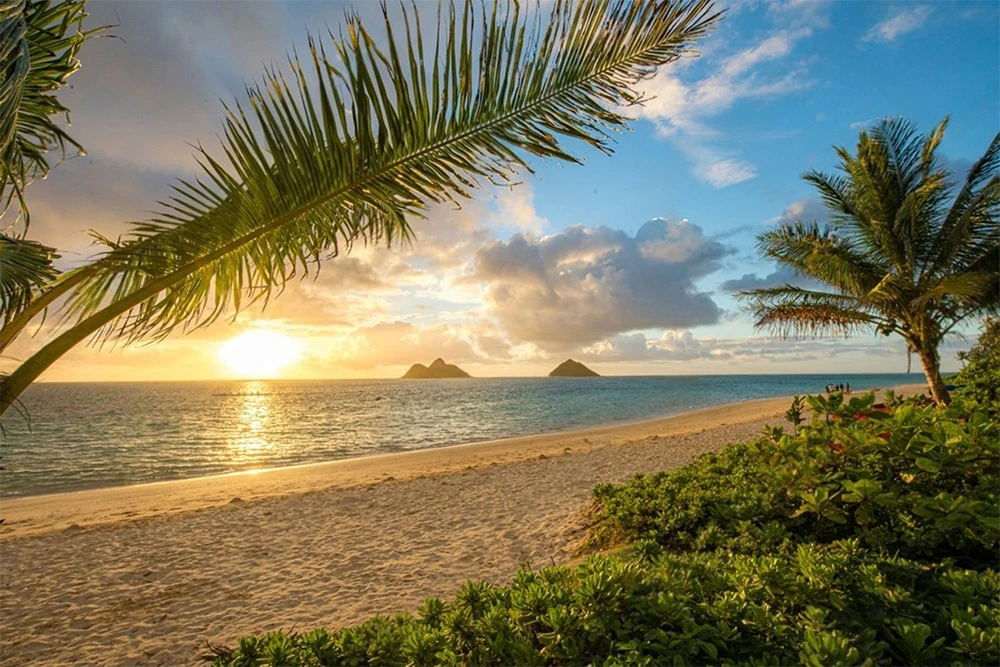
Beaches in every color, legends in every grain
The “best beach” debate always starts somewhere between the grill smoke and the sea breeze, and everyone’s right in their own way. Along Maui’s Road to Hana, sand doesn’t come in one mood it shows up jet black, a red crescent tucked under rusted cliffs, and, elsewhere in the islands, a rare olive green that looks like the shoreline is keeping a secret. It’s the kind of palette that makes you grin, like a box of crayons spilled by the sea.
Each color seems to grow its own little world. On the black shore, the surf sounds fuller and the pebbles warm your soles; tidepools bloom with shy urchins and ‘opihi clinging like stubborn old timers. The red cove feels hushed, its cliffs shielding soft water where tiny fish flicker like sparks, and naupaka shrubs stitch the edges with green. Even the stories shift old mo‘olelo about Pele and fishermen feel closer here, as if the wind is fluent in folklore.
Maybe that’s why no one agrees on a favorite. Your answer changes with the trade winds, or the kind of day you’ve had. I remember a morning when the black sand matched my mood and the waves drummed steady in my bones; later that week, the red beach felt like a held breath finally released. The argument never ends at a cookout, and I hope it doesn’t because every opinion is really a memory in disguise, a color you carry home on your skin.
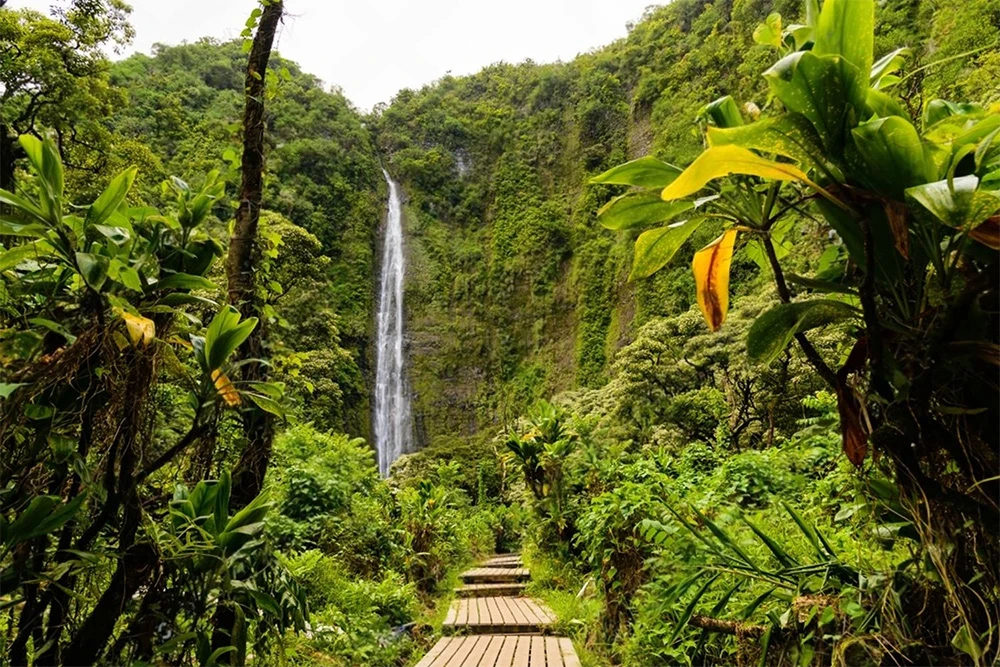
Lei released to sea, inviting new beginnings home
I remember a quiet evening when the shoreline fell into that soft, golden hush and the air smelled faintly of plumeria. After the speeches and laughter, the leis were set on the water and began to drift, slow and sure, like little prayers stitched with petals. The tide caught them and they bobbed in the ripples, a bright ribbon slipping seaward. Somewhere along the sand in Honolulu, it felt like everyone exhaled at once.
It’s a tender way to show respect letting the flowers carry what words can’t, trusting the ocean to hold the feeling. People say it marks a beginning, and I believe it; there’s something about release that makes room for what comes next. Here, it feels right to hope that love and luck will learn the path back to shore. Watching the petals sway with the current, I felt my own wishes loosen, then quietly come home.
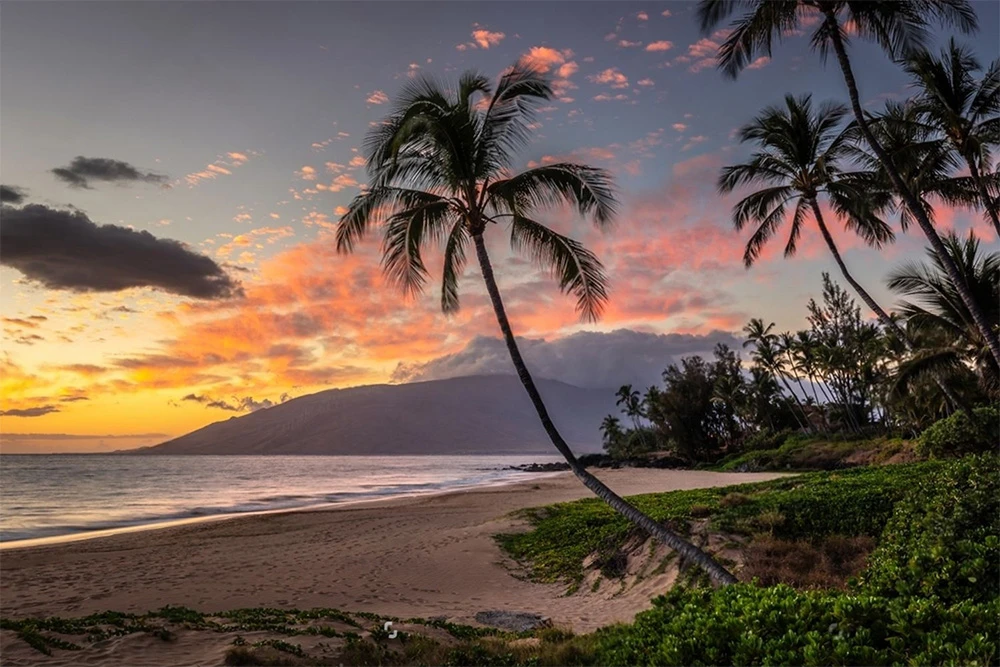
When sunlight turns stone into whispered stories
I love that hush right before late light arrives, as if the stone is holding its breath. At first there’s only dark lava and heat shimmering in the air. Then, with the sun tilting low, lines lift from the rock people with outstretched hands, animals with lean backs, tiny footprints stepping across a cooled wave. They appear like ink seeping through old paper, and suddenly the plain isn’t plain anymore; it’s a page.
I remember standing on Hawai‘i Island, surprised that something so ancient could be so shy, revealing itself only for a slant of an hour. The carvings feel both tender and stubborn, a message scratched by centuries gone hands that refuses to shout. It makes you slow down. Not everything wants to be known at once, and the patience the place asks of you is part of the story.
Once, a thin cloud crossed the sun and a beautiful spiral faded back into shadow, as if it had only stopped by to say hello. I laughed, a little humbled. For a moment I’d been invited to read the old script of the lava, and then it closed itself again still there, still true, waiting for the right light.
Rain arrives with more than 200 names
I remember a kupuna smiling when the first drops tapped the tin roof; nobody groaned. Rain is a gift, she told me, and then she began to name it – the tender mist, the shore born squall, the shower that visits at dusk. She spoke in an easy rhythm, steady and sure.
There are more than 200 ways to say it here, each for a different mood or place. A fine mist on your cheeks, a warm sprinkle that smells of guava, a sudden downpour loud on the roof so you feel it in your ribs. Listening to her, I could hear how weather shapes poetry and chores alike – which crops will thrive, which paths shine, which songs belong to a gray morning.
In Hilo, the rain is a teacher, asking you to pay attention. You start to notice gentleness and weight, the way air cools just before a squall, the clean, green scent that lifts from the earth afterward. Giving rain so many names doesn’t fuss over weather; it honors how it touches daily life, and somehow that respect softens you too.
A musical language that stitches generations together
It’s the kind of talk that makes your shoulders loosen warm vowels, quick little pauses, and laughter tucked between words. In Honolulu, it floats from playground fences and corner plate lunch counters, this Pidgin made from Hawaiian, English, Japanese, Filipino, and the many voices that sailed here and stayed. I remember hearing it and feeling before I understood anything that it carried welcome in its sound.
Kids pick it up without trying, trading phrases with the same ease they swap snacks, while adults slip in and out of it depending on who’s listening. That code switching feels like care: a way to meet someone where they are, then bring them a step closer. You can hear aunties soften their words for a shy teenager, uncles pepper stories with old plantation terms, and somewhere in there the past and present shake hands.
They call it the islands’ unofficial third language, but “unofficial” doesn’t touch the way it holds people together. It keeps family memory and neighborhood humor alive, makes room for belonging without asking for perfection. To me, Pidgin is a porch light at dusk steady, familiar, quietly guiding you home.

Final thought
Maybe it's in the quiet asides and late night laughter, in the small details people share without thinking, that the truer place comes into focus. The tiny surprises and human moments gather, like sea glass in a pocket, and their gentle weight is what we remember. What we carry home feels closer, shaped by faces, voices, and the pace of everyday life. May we keep looking with patient eyes, and let Hawaii meet us in its own time, open to wonder.

